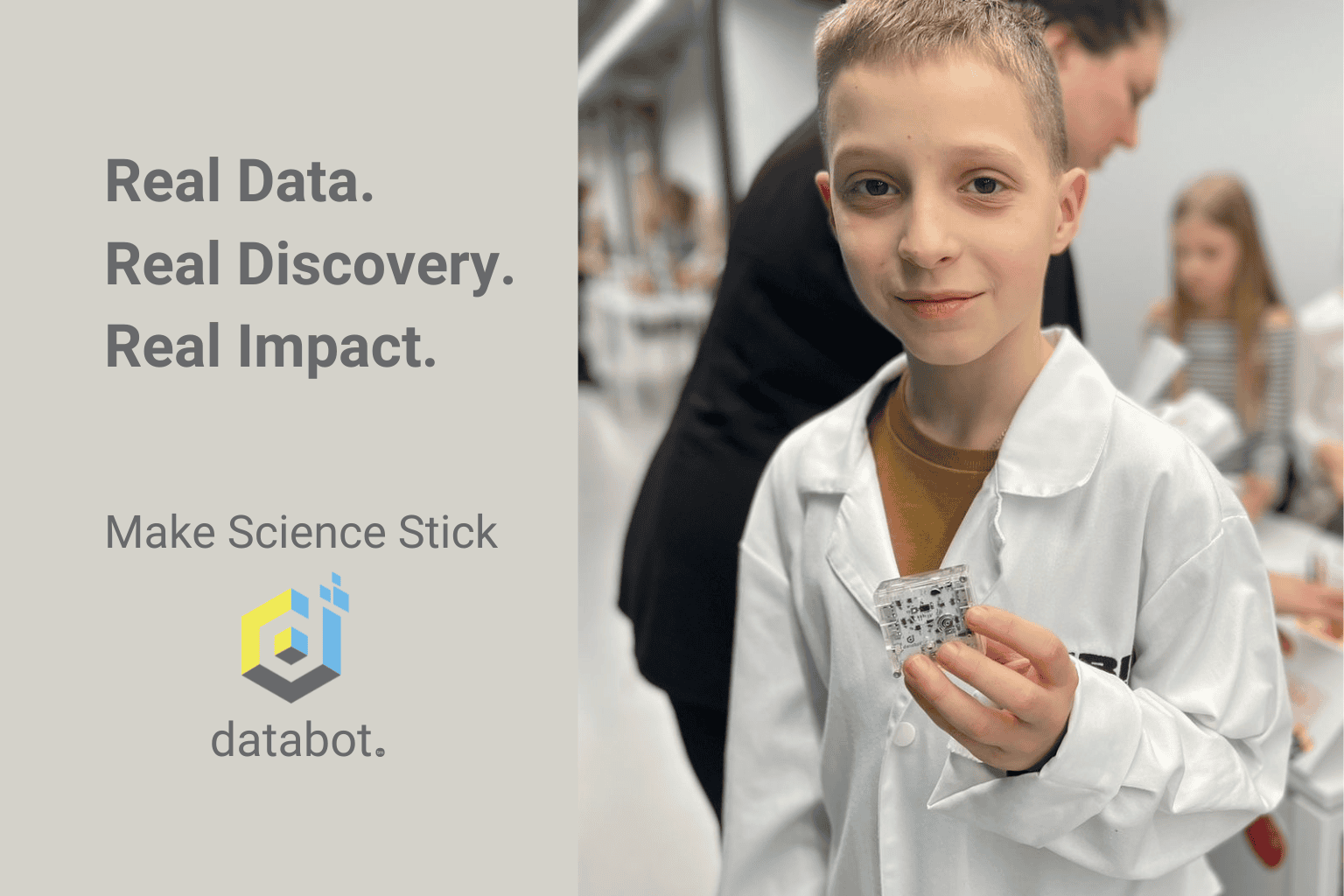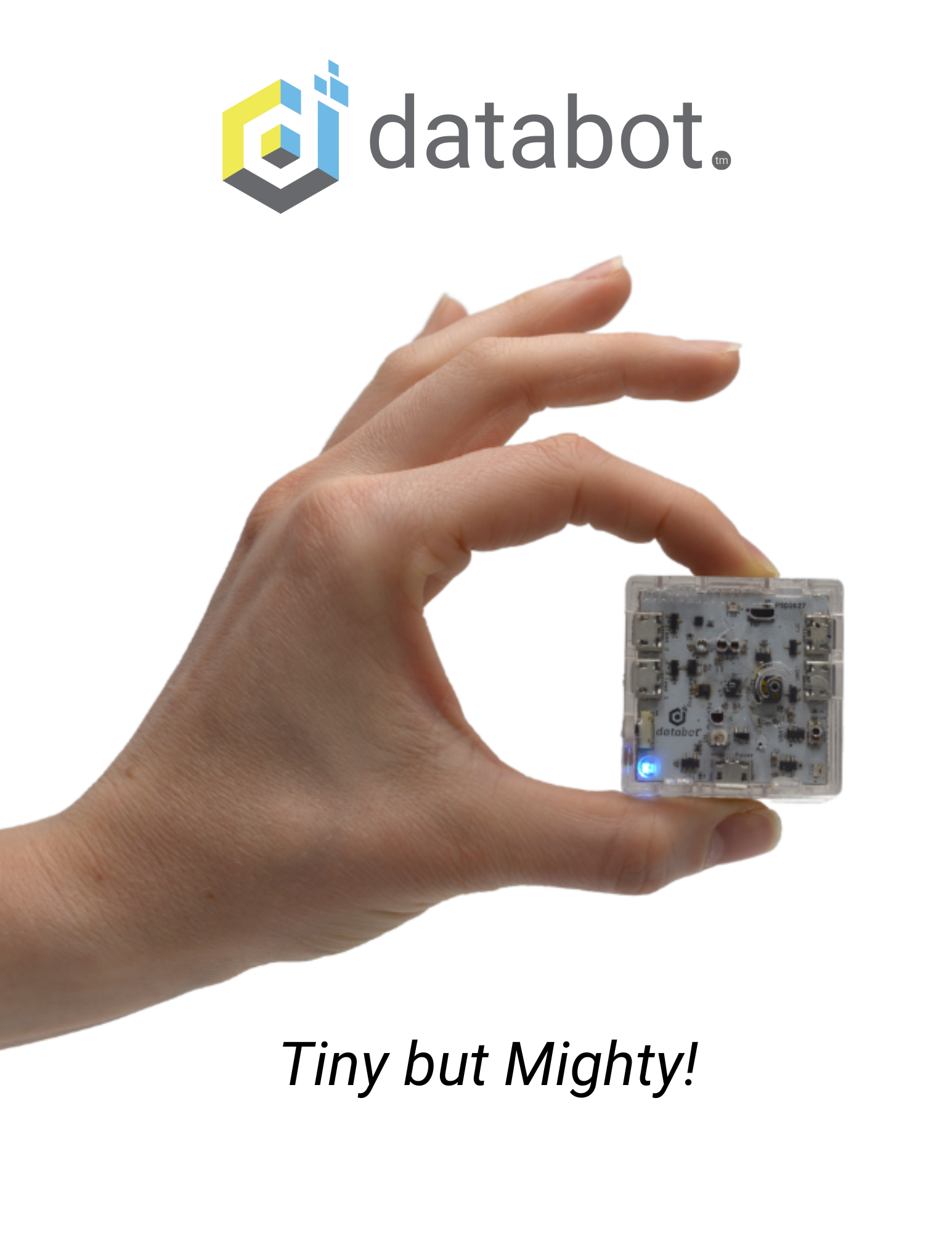
Science scores don’t just improve on their own – bring real impact to your classroom!

Friction!
Students work together to monitor temperature changes based on the friction of rubbing hands together. Who can get the highest temperature?!
Student Outcomes
Rich Engagement
Boosts Science Proficiency
Improved Test Scores
Builds Data Literacy
Light Intensity
Students work to identify the relationship between distance from a light source and light intensity in lux (the inverse square law). This student’s partner is off-screen monitoring the data.
Instructional Value
Cross-Disciplinary Learning
Research Based
Standards-Aligned Instruction
Inquiry-Based Learning
Air Pressure & Altitude
Students work to identify the relationship between air pressure and altitude by collecting air pressure data running up and down stairs and correlating that to changes in altitude based on physical measurements.
Implementation and ROI
Low Total Cost of Ownership
Easy to Implement
Durable, Classroom-Ready
Low Floor – High Ceiling

Free Lesson Plan & Research Here!
Energizing science education with hands-on learning, real-world data, and limitless curiosity.
Science FAQ
What exactly is databot?

databot is a teeny tiny science and coding lab. It has 15 built-in sensors for exploring science plus it has lights, sound, and expansion ports on-board for amazing technology projects.
What sensors are on board databot - what can I teach?
databot is equipped with 15 on-board sensors and has external ports for 2 waterproof temperature probes that can be read simultaneously. The range of sensors supports activities across all the science domains including Physics, Chemistry, Life Science, Earth Science, and Environmental explorations. Here is the list!
- Accelerometer
- Air Pressure
- Altimeter
- CO2
- Color (RGB intensity levels in Lux)
- Gesture (Primarily used in coding)
- Gyroscope
- Humidity
- Light Intensity
- Magnetometer
- Sound Intensity
- Temperature (external probes, waterproof, one is included, two are supported)
- Time of Flight (Proximity – a distance sensor with a range of approximately 2.5 meters)
- Volatile Organic Compounds
- Ultraviolet Index
How do I use this for science in my classroom?
Use databot to make your science lessons more engaging and more relevant through live sensor data. When students are able to experience instant feedback tied to a phenomenon, for example seeing CO2 levels spike when they breathe on a databot, a much deeper understanding of the related science is gained.
Are there lessons that show me how to use databot?
Yes, we have a library of lessons that take you from your first steps learning the sensors to advanced labs. In addition, AI lesson helpers quickly generate activities that instantly improve the effectiveness of your current lessons by adding live data to them.
What grades can I teach with databot?
databot is being used from KG to university classrooms. databot was designed with a K–12 progression in mind. Younger learners do simple, high-engagement activities like looking at CO2 levels or graphing light and sound, while older students can use databot for traditional science labs in Chemistry, Physics, Life Science, and Earth Science. Beyond science, students can dive into advanced coding, data analysis, and cross-disciplinary STEM projects making it an incredible resource for research projects and capstone challenges. With extensive published databot activities and our AI-powered lesson generators, you’ll always have material that fits your student’s grade and ability.
What technology is required to use databot?
Vizeey is the free smart app included with databot, it connects by Bluetooth and allows you to visualize data from any of the sensors. It runs on Android and IOS devices which means you can run it on iPads, Chromebooks, your smartphone, and Android tablets. If you are interested in coding (not required) you can code using Chromebooks, Windows, and MacOS.
How much does databot cost?
Individual kits are $189.99, Twin Packs are $375, and a Class Pack of 10 is $1850. We recommend a 2:1 student to databot ratio as students will work in pairs to conduct the activities and data analysis. So if you have 24 students in your class purchase 13, one for each pair of students plus an extra for demonstration.
How durable is databot? Will it survive my classroom?
databot is extremely durable with no moving parts and an impact-resistant polycarbonate case. They are designed to easily withstand being dropped in the classroom accidentally. If you are going to launch them with a catapult or a rocket or use them with your Egg Drop challenge off the roof of your school (all real examples that have been done), we recommend padding them with some bubble wrap to help absorb the impact.
What is the lifespan of databot in a typical classroom?
databot is extremely durable so you should enjoy years of service from these remarkable devices. The rechargeable battery is rated for 500 charge cycles and should last you approximately 3 years based on your usage. Once the battery fails we an replace it for a low fee of $29.99, setting you up for another 3 years of use.
Does your software require student logins and privacy permissions?
Vizeey does not require any student login or identifiable information to use. All data is collected on the local app.
Where is databot currently being used?
databot is in use by STEM educators all over the planet. Contact us for a long list of references of schools and organizations using databot in the United States.
Are you an approved vendor in my district?
We are registering with US districts so may be. Contact us to check or have the process started. If not and you are in a hurry you can order databot through Flinn Scientific who is almost certainly a registered vendor in your District.
How many databots do I need in my classroom?
We recommend a 2:1 student to databot ratio as students will work in pairs to conduct the activities and data analysis. So if you have 24 students in your class purchase 13, one for each pair of students plus an extra for demonstration.
How long does it take to get trained and learn how to use databot?
You can literally install the app, scan in a QR code to load pre-configured experiments, connect to databot by bluetooth, and be streaming live data all in 60 seconds. To formally learn how to use databot in more depth, we recommend going through the free Sensor Starter activities (there are 15 of them and each will take an educator around 20 minutes to read and do the two hands-on activities). Once you are comfortable with the sensors on-board, there are many pre-written resources for conducting labs as well as AI lesson generators to help you customize your databot learning experiences to your classroom and curriculum. You DO NOT need to change your curriculum or things you are teaching, you use databot to make your lessons more engaging, more effective, and fun.
How often do I use databot in my class?
To optimize the impact of databot on your science lessons we recommend using it at least twice a month to truly energize the student experience. As you gain more comfort with databot you will find you are using it more and more frequently. Once students learn how to use it you will be surprised at how many times you will be asked to conduct a quick experiment or exploration with databot.
